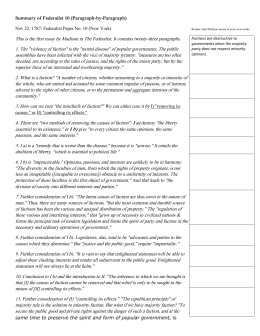

But they can dissolve if the public is given time and space to consider long-term interests rather than short-term gratification. 10” as a group “united and actuated by some common impulse of passion, or of interest, adversed to the rights of other citizens, or to the permanent and aggregate interests of the community.” Factions arise, he believed, when public opinion forms and spreads quickly.


Madison referred to impetuous mobs as factions, which he defined in “Federalist No. After the Revolutionary War, he had observed in Massachusetts “a rage for paper money, for abolition of debts, for an equal division of property.” That populist rage had led to Shays’s Rebellion, which pitted a band of debtors against their creditors. In Madison’s view, history seemed to be repeating itself in America. The demagogue Cleon was said to have seduced the assembly into being more hawkish toward Athens’s opponents in the Peloponnesian War, and even the reformer Solon canceled debts and debased the currency. Madison and Hamilton believed that Athenian citizens had been swayed by crude and ambitious politicians who had played on their emotions. Check out more from this issue and find your next story to read.


 0 kommentar(er)
0 kommentar(er)
